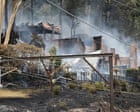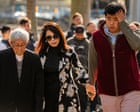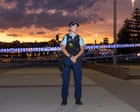
Holocaust survivor, London-born rabbi and 10-year-old girl among victims of Bondi beach terror attack
At least 16 people including one of the alleged gunmen died at the shooting in Sydney on Sunday, aged between 10 and 87
Stay updated with the latest insights, tutorials, and trends in technology

At least 16 people including one of the alleged gunmen died at the shooting in Sydney on Sunday, aged between 10 and 87

Family of Ahmed al-Ahmed say he ‘doesn’t discriminate’ and would have done anything to save lives during the attack

Gun owners face limits on the number of weapons they can own and only Australian citizens would be able to hold a licence, prime minister says

Extreme heat follows blazes in New South Wales, while strong winds plunge Brazil’s largest city into darknessExtreme heat and bushfires have ravaged...

Rights groups dismiss ‘sham conviction’ of media tycoon on national security offences in city’s most closely watched rulings in decades

The Senate Republican s comments come after President Donald Trump resurrected the unsubstantiated claims against Rep. Ilhan Omar, D-Minn., during a...

House Republicans released text of a healthcare plan that they hope to vote for next week....

Pressure is mounting on Congress to act after Australia’s under-16 social media ban sparked calls from U.S. lawmakers to better protect children...

Vice President Kamala Harris thanked supporters for defending democracy at the DNC s winter meeting addressing the affordability crisis and outlining...

SBA unveils new initiative targeting Biden-era regulations that imposed $6 trillion in compliance costs on American families and small firms...

This blog is now closed. Our live coverage cont...

Australia recorded 1,654 anti-Jewish incidents in year to September - three times higher than any annual total before Gaza war
Showing page 1 of 2014 (24159 total articles)